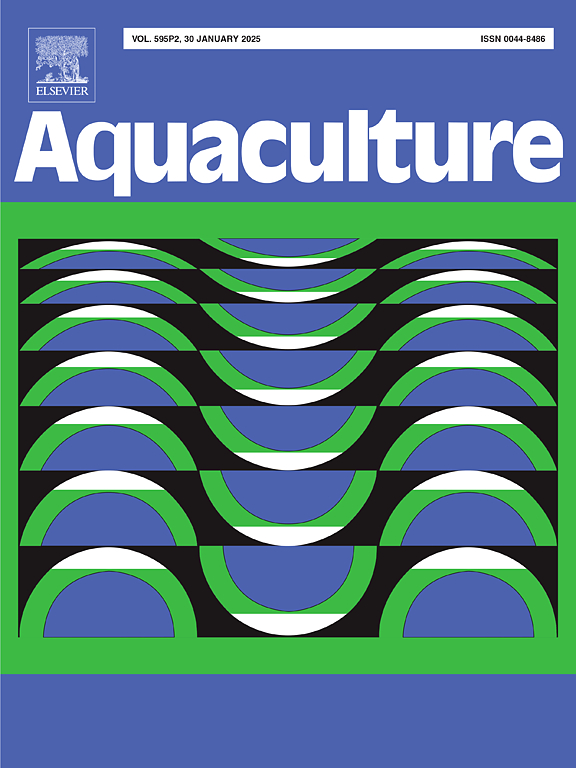Effects of hypoxic stress on gastric sieve (GS) filtering function of Litopenaeus vannamei
IF 3.9
1区 农林科学
Q1 FISHERIES
引用次数: 0
Abstract
The gastric sieve (GS) is a filtering structure found in the posterior stomach chamber (PSC) of Litopenaeus vannamei, which allows small particles to enter the hepatopancreas directly. However, it remains unclear if pathogens can also enter the hepatopancreas through this pathway. In this study, we examined the internal structural changes of the PSC via histological and ultra-structure analysis. We also orally administered fluorescent microspheres and bioparticles (Vibrio parahaemolyticus and WSSV) of varying sizes to shrimp to determine their passage under hypoxia stress. The results showed that the PSC could be divided into four segments based on structural changes, and the GS performed its filtering function through two kinds of setae with different morphologies. Under normal dissolved oxygen levels (approximately 7.6 mg/L), V. parahaemolyticus and 1 μm fluorescent microspheres were unable to enter the hepatopancreas via GS. In contrast, under hypoxia stress (1.5–2 mg/L), both vibrio and 1 μm fluorescent microspheres could enter the hepatopancreas via GS in a short timeframe. WSSV and 0.1 μm fluorescent microspheres could enter the hepatopancreas via GS irrespective of hypoxia stress, while 5 μm fluorescent microspheres could not enter the hepatopancreas via GS even under hypoxia. These results suggest that GS functions as a particle diameter-dependent filter, with its filtering function influenced by hypoxia stress. Pathogens around 1 μm in size can invade the hepatopancreas through this pathway under hypoxia stress, providing novel insights into the mechanisms of pathogen invasion in shrimp.
求助全文
约1分钟内获得全文
求助全文
来源期刊

Aquaculture
农林科学-海洋与淡水生物学
CiteScore
8.60
自引率
17.80%
发文量
1246
审稿时长
56 days
期刊介绍:
Aquaculture is an international journal for the exploration, improvement and management of all freshwater and marine food resources. It publishes novel and innovative research of world-wide interest on farming of aquatic organisms, which includes finfish, mollusks, crustaceans and aquatic plants for human consumption. Research on ornamentals is not a focus of the Journal. Aquaculture only publishes papers with a clear relevance to improving aquaculture practices or a potential application.
 求助内容:
求助内容: 应助结果提醒方式:
应助结果提醒方式:


